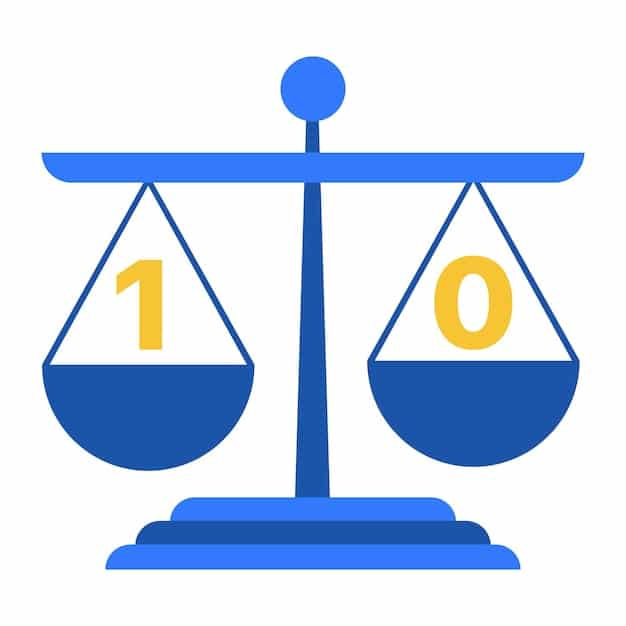AI and Human Rights: Protecting Fundamental Freedoms in AI Systems

AI and Human Rights: Ensuring AI Systems Respect Fundamental Freedoms addresses the critical need to protect fundamental rights as artificial intelligence becomes increasingly integrated into society, focusing on ethical frameworks and governance strategies to prevent AI-driven infringements on human liberties.
The rise of artificial intelligence presents unprecedented opportunities, but also poses significant challenges to human rights. AI and Human Rights: Ensuring AI Systems Respect Fundamental Freedoms is essential to guarantee that AI systems align with our values and protect our fundamental liberties.
Understanding the Intersection of AI and Human Rights
Artificial intelligence is transforming various aspects of life, from healthcare to law enforcement. Understanding the impact of AI on human rights is crucial to ensure its responsible development and deployment.
Defining Key Human Rights
Several fundamental rights are potentially affected by AI, including the right to privacy, freedom of expression, and non-discrimination. These rights are enshrined in international law and national constitutions.
AI’s Impact on These Rights
AI systems can infringe on privacy through mass surveillance and data collection. Algorithmic bias can lead to discriminatory outcomes, while censorship and manipulation can impinge on freedom of expression.
- Data Collection and Privacy: AI systems often require vast amounts of data, raising concerns about the privacy of individuals whose data is being collected and used.
- Algorithmic Bias and Discrimination: AI algorithms can perpetuate and amplify existing biases, leading to discriminatory outcomes in areas such as hiring, lending, and criminal justice.
- Freedom of Expression and Censorship: AI can be used to censor content online and manipulate public opinion, thereby undermining freedom of expression and democratic processes.
Understanding these intersections is vital for developing policies and safeguards that protect human rights in the age of AI.
Ethical Frameworks for AI Development
Establishing ethical frameworks is essential to guide the development and deployment of AI systems. These frameworks provide a moral compass for AI practitioners and policymakers alike.
Principles of AI Ethics
Key principles include fairness, accountability, transparency, and respect for human dignity. These principles serve as a foundation for ethical AI development.
Implementing Ethical Guidelines
Companies and organizations can adopt and implement ethical guidelines to ensure their AI systems align with ethical principles. This involves conducting ethical reviews, promoting transparency, and establishing accountability mechanisms.

Adhering to ethical frameworks can minimize the risk of AI-related human rights violations.
The Role of Governance and Regulation
Effective governance and regulation are necessary to ensure that AI systems are developed and used in a manner that respects human rights. This involves establishing legal frameworks and regulatory bodies to oversee AI development.
Establishing Legal Frameworks
Governments can enact laws that address specific AI-related risks, such as data privacy, algorithmic bias, and autonomous weapons. These laws should be consistent with international human rights standards.
- Data Protection Laws: Laws like GDPR and CCPA set standards for data collection, use, and protection, ensuring individuals have control over their personal data.
- Algorithmic Accountability: Regulations can require organizations to assess and mitigate algorithmic bias in AI systems, promoting fairness and non-discrimination.
- Oversight of Autonomous Systems: Legal frameworks should address the deployment of autonomous systems, such as self-driving cars and drones, ensuring they operate safely and ethically.
Regulatory Bodies and Oversight
Independent regulatory bodies can be established to oversee AI development and enforce legal standards. These bodies can conduct audits, investigate complaints, and impose sanctions for violations.
Through robust governance and regulation, we can promote responsible AI innovation while safeguarding human rights.
Case Studies of AI Impacting Human Rights
Examining real-world cases can provide valuable insights into the potential impacts of AI on human rights. These case studies highlight both the benefits and risks associated with AI systems.
Facial Recognition Technology
Facial recognition technology has been used for law enforcement, surveillance, and border control. However, it also raises concerns about privacy, bias, and potential for abuse.
AI in Criminal Justice
AI algorithms are increasingly used in criminal justice for risk assessment, predictive policing, and sentencing. This raises questions about fairness, transparency, and the potential for discriminatory outcomes.

These case studies underscore the need for careful consideration of human rights implications when deploying AI systems.
Mitigating the Risks: Strategies and Solutions
Addressing the risks posed by AI requires a multi-faceted approach, including technical solutions, policy interventions, and public awareness campaigns. These strategies can help mitigate potential harms and promote responsible AI development.
Technical Solutions
Researchers are developing techniques to detect and mitigate algorithmic bias, enhance data privacy, and improve the transparency of AI systems. These technical solutions can help make AI more fair, accountable, and trustworthy.
Policy Interventions
Governments can implement policies that require AI developers to conduct human rights impact assessments, promote transparency and accountability, and establish redress mechanisms for individuals harmed by AI systems.
- Human Rights Impact Assessments: Mandatory assessments can help identify and mitigate potential human rights risks before AI systems are deployed.
- Transparency and Explainability: Requiring AI systems to be transparent and explainable can increase trust and accountability.
- Redress Mechanisms: Establishing clear channels for individuals to seek redress when harmed by AI systems can provide justice and accountability.
Public Awareness and Education
Raising public awareness about the potential impacts of AI on human rights is essential to foster informed public discourse and promote responsible AI development. This can involve educational campaigns, media coverage, and community engagement.
By implementing these strategies, we can create a future where AI is used to advance human rights, rather than undermine them.
The Future of AI and Human Rights
The future of AI and human rights depends on our ability to anticipate and address emerging challenges, while seizing the opportunities for positive change. This requires ongoing collaboration between governments, industry, civil society, and academia.
Emerging Challenges and Opportunities
New AI technologies, such as generative AI and quantum computing, present both new challenges and opportunities for human rights. It is crucial to stay ahead of these developments and proactively address potential risks.
Promoting International Cooperation
International cooperation is essential to ensure that AI is developed and used in a manner that respects human rights globally. This can involve sharing best practices, coordinating regulatory approaches, and establishing international standards.
By working together, we can shape a future where AI is a force for good, advancing human rights and promoting human well-being.
| Key Point | Brief Description |
|---|---|
| ⚖️ Ethical Frameworks | Principles like fairness and transparency guide AI development. |
| 🛡️ Governance and Regulation | Legal frameworks and regulatory bodies oversee AI systems. |
| 💡 Risk Mitigation | Technical solutions and policy interventions address AI risks. |
| 🌍 International Cooperation | Global collaboration ensures AI respects human rights. |
FAQ
▼
Key principles include fairness, accountability, transparency, explainability, and respect for human dignity. They ensure AI systems are developed and used responsibly.
▼
AI systems often require vast amounts of data, raising concerns about the privacy of individuals whose data is being collected, stored, and analyzed, potentially without consent.
▼
Algorithmic bias occurs when AI systems perpetuate and amplify existing biases in data, leading to discriminatory outcomes. It can be mitigated through careful data curation, bias detection, and fairness-aware algorithms.
▼
Legal frameworks such as GDPR and CCPA set standards for data collection, use, and protection, ensuring individuals have control over their personal data and promoting transparency.
▼
Establishing clear channels for individuals to seek redress when harmed by AI systems can provide justice and accountability. This includes mechanisms for complaints, investigations, and compensation.
Conclusion
Ensuring that AI systems respect fundamental freedoms is not just an ethical imperative, but a practical necessity. By embracing ethical frameworks, establishing robust governance, and promoting international cooperation, we can harness the transformative potential of AI while safeguarding human rights for all.





